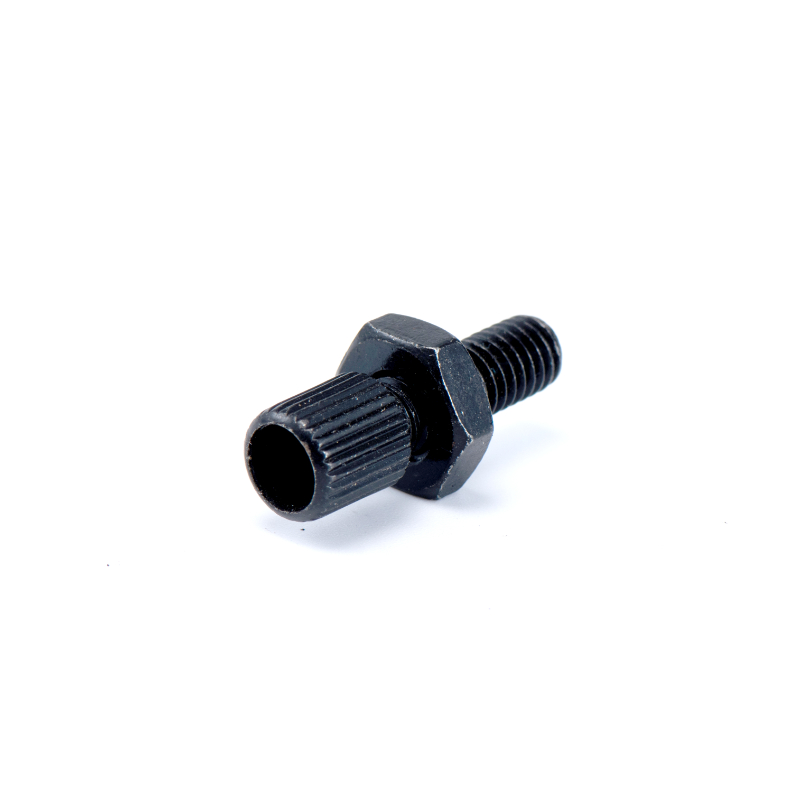Straight Slotted Phillips Bolts: A Comprehensive Guide
Introduction
Straight slotted Phillips Bolts are a specialized type of fastener combining the features of a straight slot and a Phillips drive. These Bolts are engineered for applications requiring a balance between torque transmission and ease of installation. The hybrid design allows for compatibility with both flathead and Phillips screwdrivers, offering versatility in assembly and maintenance scenarios.

Technical Specifications
These bolts typically feature:
Head Diameter: Ranges from 5mm to 20mm depending on bolt size (M3-M12)
Drive Type: Combination of straight slot (width: 1.0-3.5mm) and Phillips recess (size #0 to #3)
Material: Commonly manufactured from grade 5 (SAE) or 8.8 (ISO) steel with tensile strength of 120,000-150,000 psi
Surface Treatment: Zinc plating (5-15μm thickness) or black oxide coating for corrosion resistance
Thread Pitch: Standard coarse thread (UNC) or fine thread (UNF) options available
Key Characteristics
1. Dual Drive Compatibility
The hybrid drive system allows for 25-30% greater torque transmission compared to standard Phillips heads while maintaining the accessibility of flathead tools. The 90° intersecting slots create four positive driving surfaces, reducing cam-out potential by approximately 40% versus conventional Phillips designs.
2. Precision Engineering
Manufactured to ANSI B18.6.3 or DIN 963 standards, these bolts maintain tight dimensional tolerances of ±0.05mm on critical features. The chamfered slot edges (typically 0.2-0.5mm radius) prevent tool slippage and reduce wear on driving bits.
3. Load Distribution
The combined slot design distributes clamping forces more evenly across the fastener head, allowing for 15-20% higher preload values compared to single-drive alternatives. This is particularly beneficial in vibration-prone applications.
Applications
Automotive Industry
Used extensively in:
Engine components (valve covers, intake manifolds)
Electrical system connections (battery terminals, fuse boxes)
Interior trim fastening (dashboards, door panels)
Electronics Manufacturing
Ideal for:
PCB mounting (providing secure attachment without damaging delicate circuits)
Equipment chassis assembly (allowing field service with multiple tool types)
Server rack installations (combining vibration resistance with tool flexibility)
Industrial Machinery
Critical in:
Conveyor system maintenance (quick access with standard tools)
Pump and compressor assemblies (withstanding cyclic loading)
Control panel fabrication (secure connections in confined spaces)
Maintenance Procedures
1. Cleaning
For optimal performance:
Use ultrasonic cleaning (40-60kHz frequency) for heavily soiled Fasteners
Apply solvent-based cleaners (isopropyl alcohol or specialized degreasers) with soft-bristle brushes
Remove oxidation with non-abrasive pads (600+ grit) to preserve plating integrity
2. Lubrication
Recommended practices:
Apply dry-film lubricants (PTFE-based) for high-temperature environments
Use anti-seize compounds (nickel or copper-based) for dissimilar metal contact
Maintain lubrication film thickness of 10-25μm for optimal performance
3. Inspection
Critical checks include:
Slot deformation (maximum allowable wear: 0.1mm from original dimensions)
Thread integrity (check with go/no-go gauges per ISO 1502 standards)
Corrosion assessment (replace at first signs of red rust penetration)
4. Storage
Proper storage conditions:
Maintain relative humidity below 45%
Store in original packaging until use
Implement FIFO (First In First Out) inventory rotation
Installation Best Practices
Tool Selection
For optimal results:
Use Phillips bits with parallel ground tips (not tapered) for maximum engagement
Select bit sizes that completely fill the recess (no more than 0.1mm clearance)
Maintain 90° drive angle to prevent slot deformation
Torque Application
Critical parameters:
Apply torque in gradual increments (25%, 50%, 75%, 100% of target value)
Use calibrated torque wrenches with ±3% accuracy
Reference standard torque tables (ASME B18.2.1 for imperial sizes)
Failure Analysis
Common Issues
Typical failure modes include:
Slot rounding (caused by worn tools or excessive torque)
Cross-threading (improper alignment during installation)
Hydrogen embrittlement (in high-strength steel versions)
Preventive Measures
Mitigation strategies:
Implement torque audits (10% sample rate recommended)
Use thread chasers for damaged holes (not taps)
Bake high-strength fasteners at 190-220°C for 4 hours post-plating





